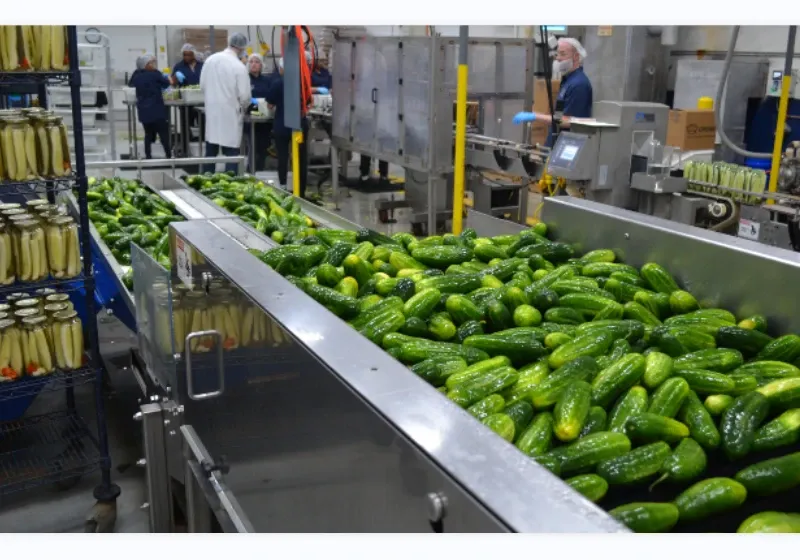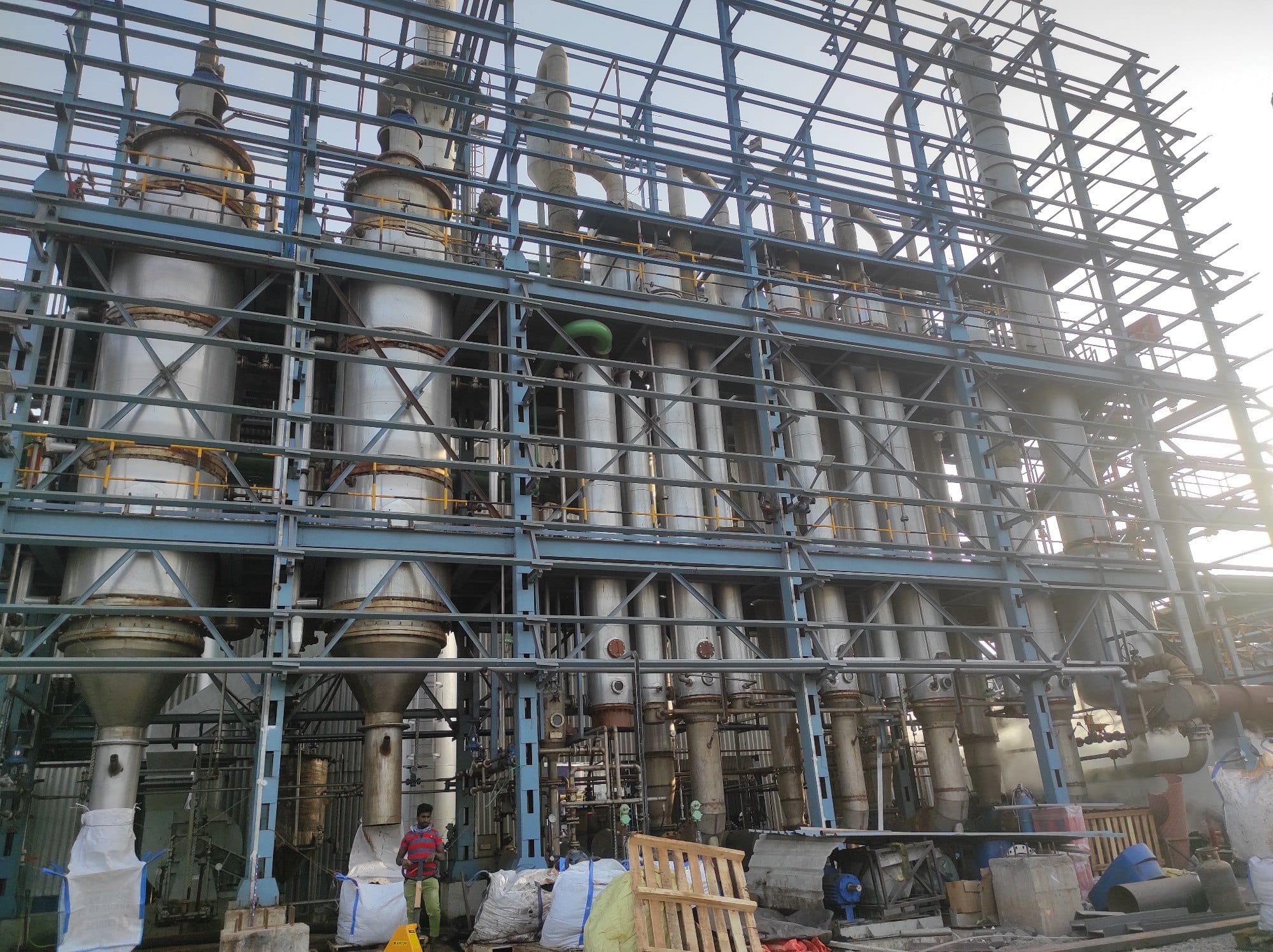Water Efficiency in Pickling Industry and Fermentation Processes
Water is a vital component in the pickling and fermentation processes, essential for ensuring food safety, flavor development, and texture enhancement. However, as the global focus shifts toward sustainable practices, the food industry faces increasing pressure to optimize water usage. This blog explores innovative strategies for enhancing water efficiency in pickling and fermentation processes, emphasizing the need for sustainable practices without compromising quality.

Understanding the Role of Water in Pickling and Fermentation
Water serves as a critical medium in both pickling and fermentation processes. In pickling, it dissolves salts and acids, creating brines that preserve food and impart flavors. This brine is fundamental to the pickling process, acting as both a preservative and a flavor enhancer. Fermentation relies on water to facilitate the growth of beneficial microorganisms, such as yeasts and bacteria, which convert sugars into acids, gases, or alcohol. The quality and quantity of water used directly affect the final product's taste, texture, and safety.
Traditional methods often involve significant water consumption, leading to wastage and environmental impact. As water scarcity becomes an increasingly pressing issue globally, the need for sustainable practices in food processing becomes paramount. Adopting water-efficient practices not only addresses environmental concerns but also ensures long-term viability for producers.
Strategies for Water Efficiency in Pickling and Fermentation
Water Recycling and Reuse
One of the most effective strategies for enhancing water efficiency is implementing recycling and reuse systems. This involves capturing water used in earlier stages of production—such as rinsing vegetables or cleaning equipment—and repurposing it for non-potable applications. For instance, water from washing cucumbers can be redirected to prepare brines for pickling. By reusing water within the facility, producers can significantly reduce their overall water consumption while maintaining product quality.
Moreover, water recycling systems can be designed to filter and purify reused water, ensuring that it meets safety standards for subsequent applications. This not only conserves water but also minimizes the energy and costs associated with sourcing fresh water.
Optimizing Water Temperature
The temperature of water used in fermentation plays a critical role in microbial activity and product development. Warmer temperatures can accelerate fermentation, enhancing the conversion of sugars and promoting faster production rates. However, higher temperatures can also lead to increased water evaporation, which can be detrimental to overall efficiency.
By optimizing water temperature based on specific fermentation requirements, producers can minimize water loss while achieving desired fermentation outcomes. Employing temperature-controlled fermentation tanks can help regulate conditions, ensuring that water is used efficiently while maintaining the desired fermentation rate. This approach not only conserves water but also enhances product consistency and reduces variability in taste and texture.
Implementing Closed-Loop Systems
Closed-loop systems offer a sustainable approach to water management in pickling and fermentation. In this setup, water is continuously recycled within the process, minimizing wastage and enhancing efficiency. For example, in a fermentation tank, the water can be circulated, allowing excess moisture to be condensed and reused.
Such systems can also integrate advanced monitoring technology to track water levels, quality, and usage patterns, allowing producers to make informed decisions about their water management practices. By optimizing water flows and reducing waste, closed-loop systems not only enhance operational efficiency but also lower environmental impact.
Utilizing Alternative Water Sources
In regions facing water scarcity, exploring alternative water sources, such as rainwater harvesting and greywater recycling, can provide a sustainable solution. Captured rainwater can be treated and used for cleaning, brining, or other non-potable applications in the production process.
Similarly, greywater from facilities—water that has been used for washing and other tasks—can be filtered and treated to meet health and safety standards for specific uses. Utilizing these alternative sources helps reduce reliance on potable water and promotes sustainable practices in the industry.
Employing these strategies not only addresses immediate water supply challenges but also fosters a culture of sustainability within the organization, encouraging ongoing innovation in water management.

Adopting Precision Fermentation Techniques
Precision fermentation focuses on optimizing every aspect of the fermentation process, including water usage. By closely monitoring variables like pH, temperature, and microbial activity, producers can fine-tune their processes to minimize water consumption without compromising quality.
Advanced technologies, such as sensors and automated controls, can help track water levels and optimize usage throughout fermentation. This data-driven approach ensures that water is only used when necessary, resulting in significant savings. Additionally, these technologies can facilitate real-time adjustments, enhancing the efficiency and effectiveness of fermentation processes.
Improving Cleaning and Sanitation Practices
Cleaning and sanitation processes in pickling and fermentation can consume substantial amounts of water. Implementing more efficient cleaning methods—such as dry cleaning techniques or using biodegradable cleaning agents—can significantly reduce water usage.
For example, using steam cleaning or high-pressure air instead of water for equipment sanitation can minimize water consumption while still ensuring that hygiene standards are met. Additionally, training staff on efficient cleaning practices can further enhance water-saving efforts in the facility, fostering a culture of sustainability and responsibility.

The Benefits of Water Efficiency
Enhancing water efficiency in pickling and fermentation processes not only contributes to sustainability but also offers numerous benefits:
- Cost Savings: Reduced water usage translates into lower utility bills and operational costs, allowing businesses to reinvest in other areas or improve profit margins.
- Regulatory Compliance: As environmental regulations tighten, adopting efficient practices ensures compliance, mitigating potential legal and financial repercussions. Companies can avoid fines and enhance their reputation by demonstrating commitment to sustainability.
- Improved Product Quality: Optimal water management leads to more consistent and higher-quality products, enhancing consumer satisfaction and brand reputation. By ensuring that water quality meets standards, producers can maintain flavor integrity and safety.
- Positive Environmental Impact: By minimizing water waste, producers contribute to the preservation of local water resources, promoting a healthier ecosystem. This commitment to sustainability can attract environmentally conscious consumers and partners, enhancing brand loyalty.
Conclusion
As the food industry faces increasing scrutiny over water usage, adopting efficient practices in pickling and fermentation processes is essential for sustainability. By implementing strategies like water recycling, optimizing temperatures, and utilizing alternative sources, producers can enhance their operations while minimizing environmental impact.
Ultimately, embracing water efficiency not only benefits the bottom line but also aligns with the broader goal of sustainable food production. Through innovation and commitment, the pickling and fermentation industries can lead the way toward a more sustainable future. By prioritizing water efficiency, producers not only safeguard resources but also position themselves as leaders in sustainable practices, ultimately benefiting consumers, communities, and the planet.